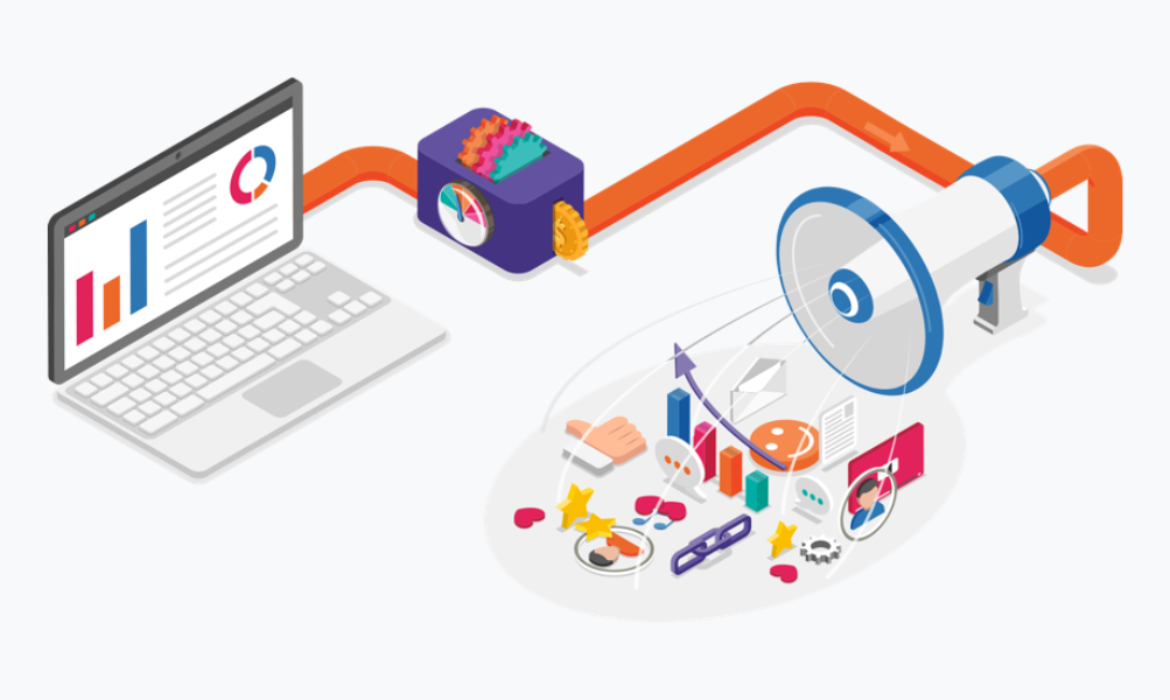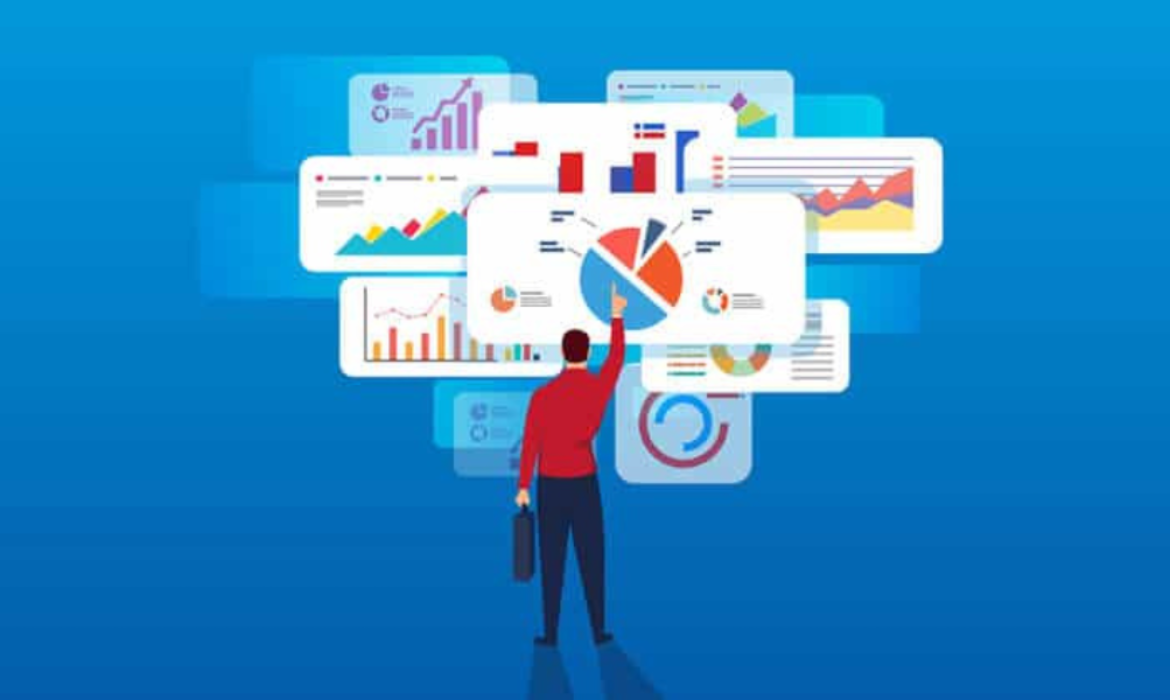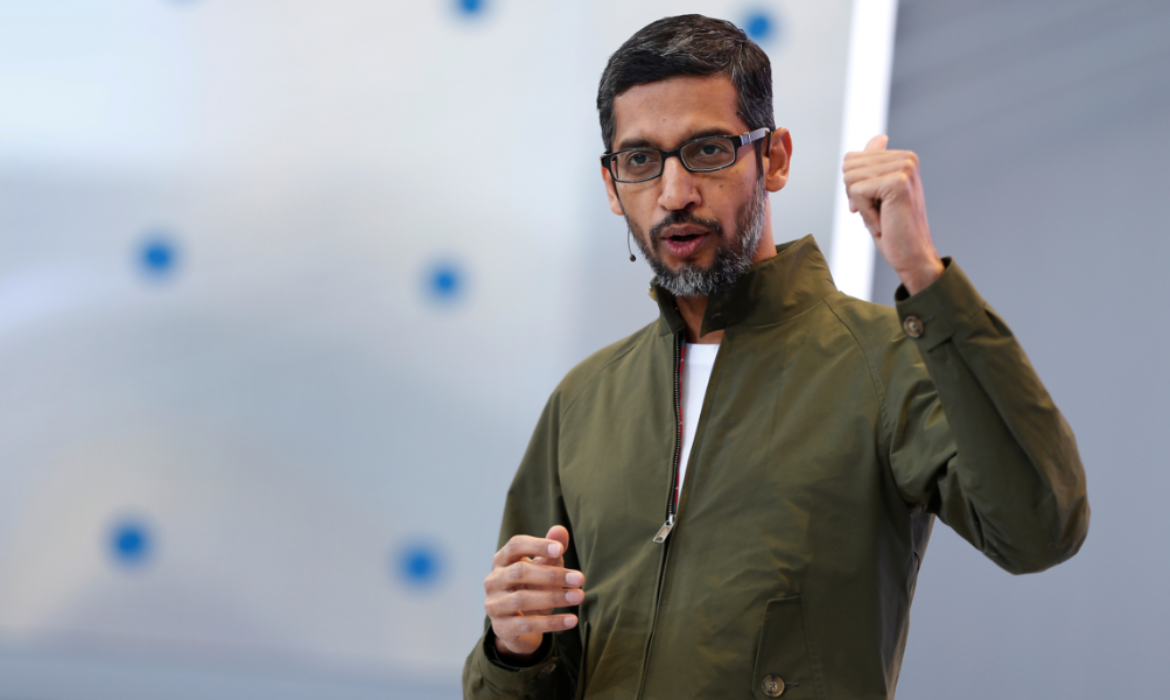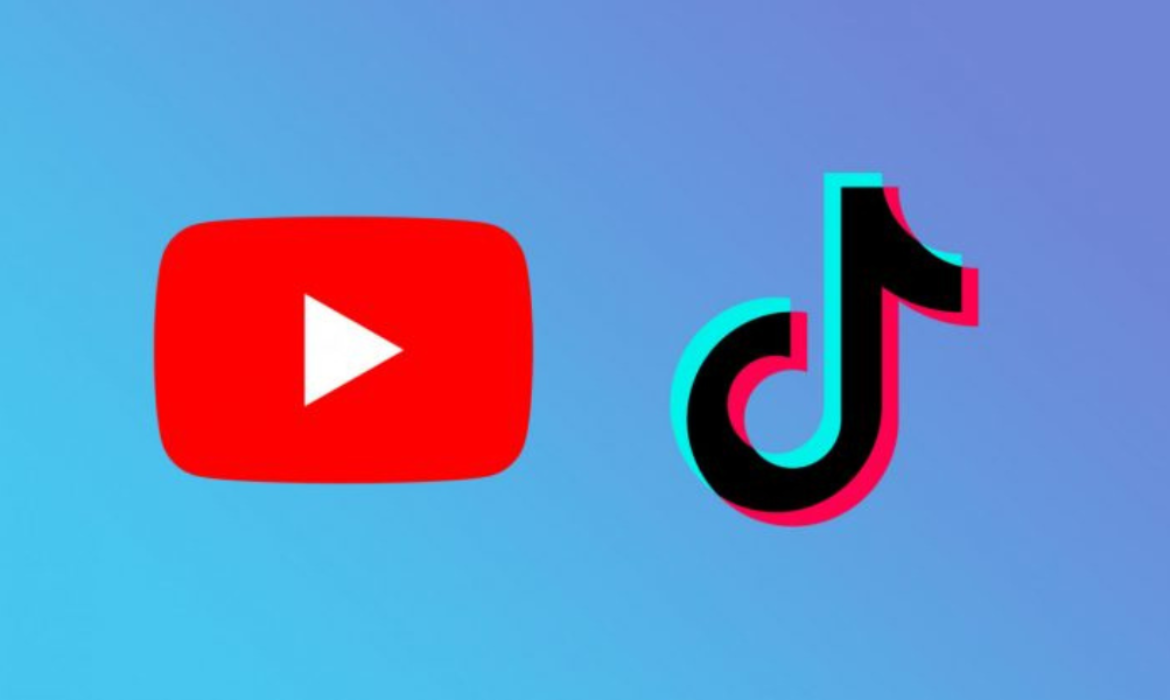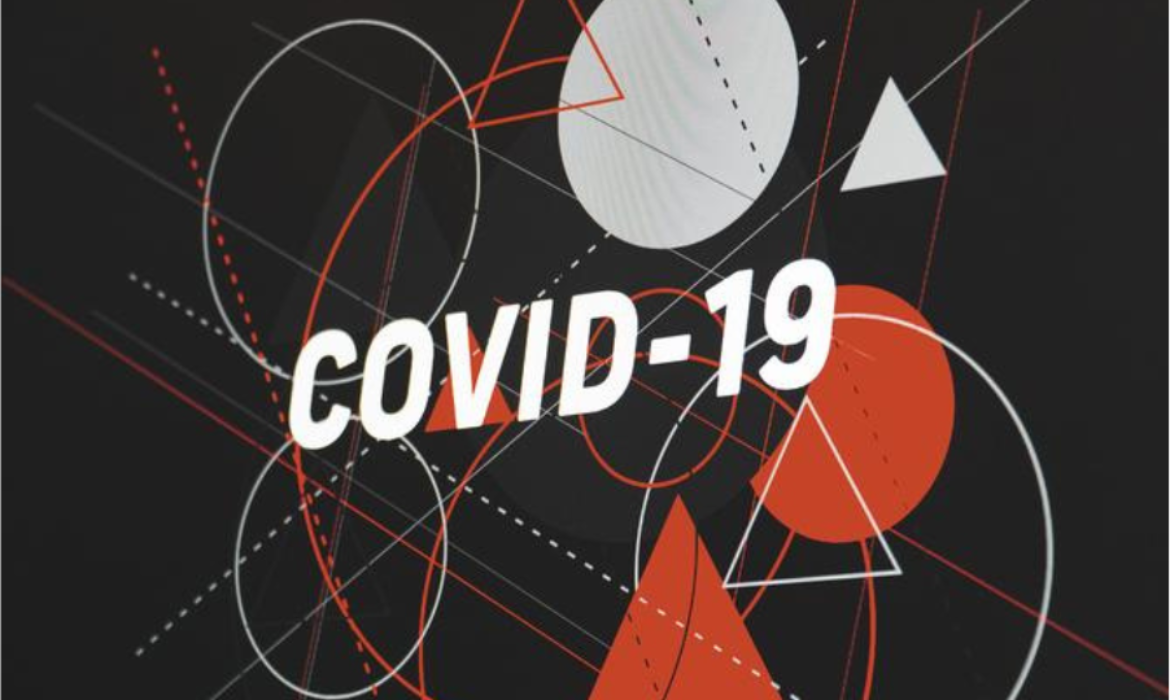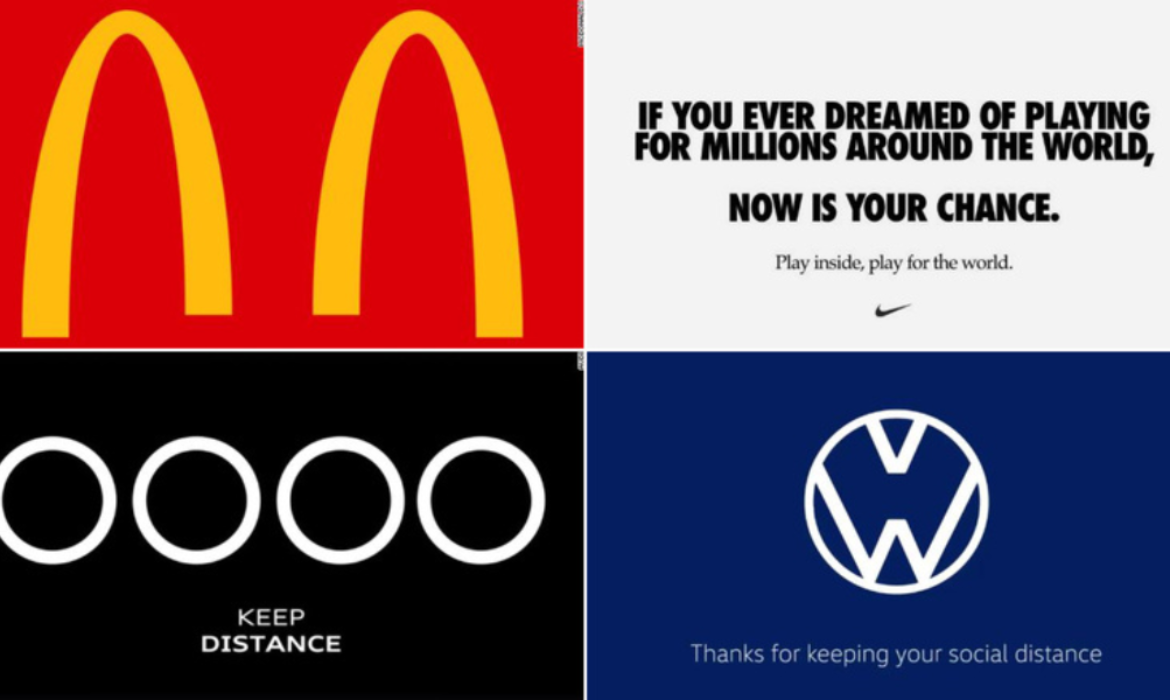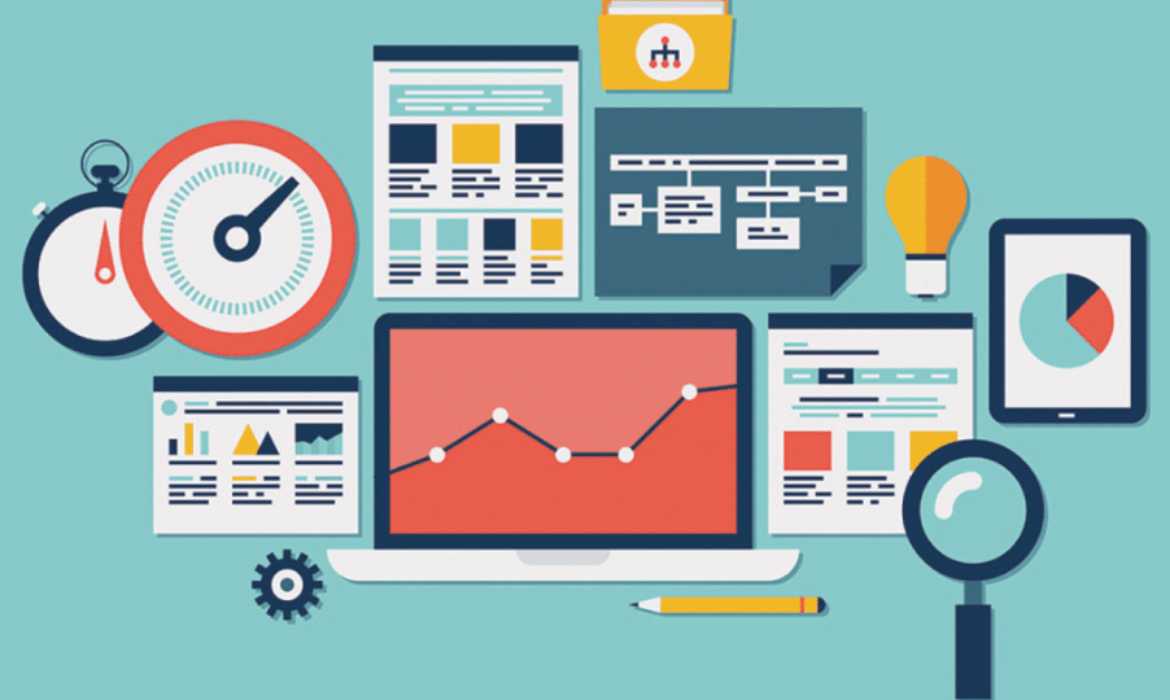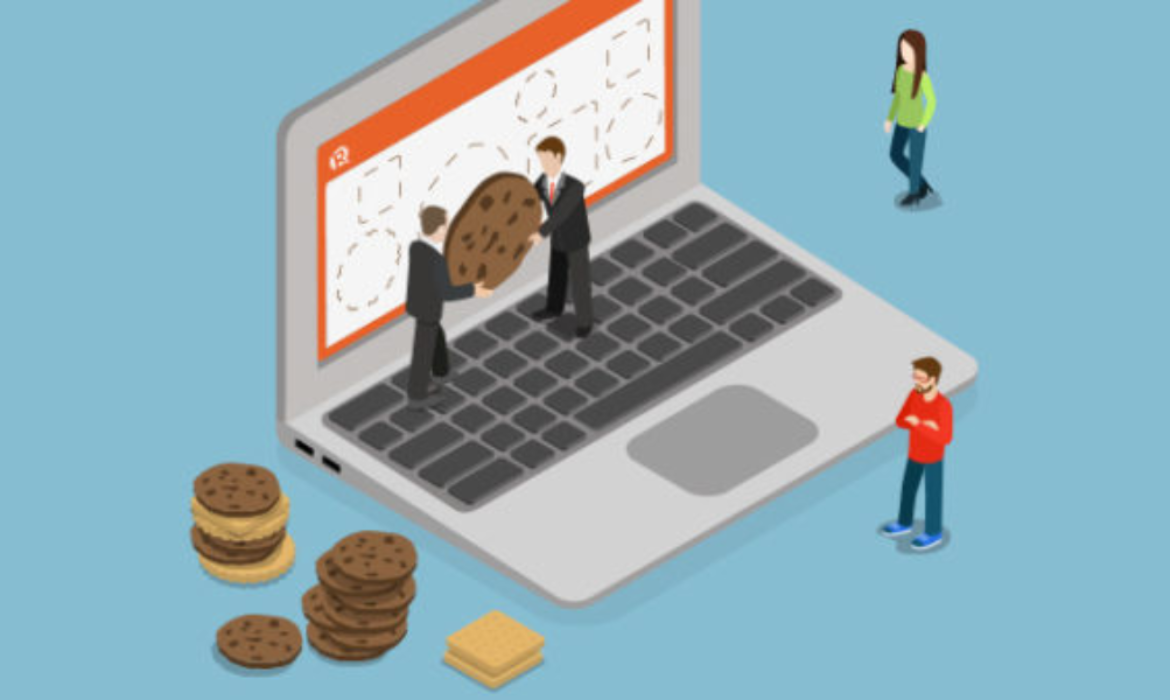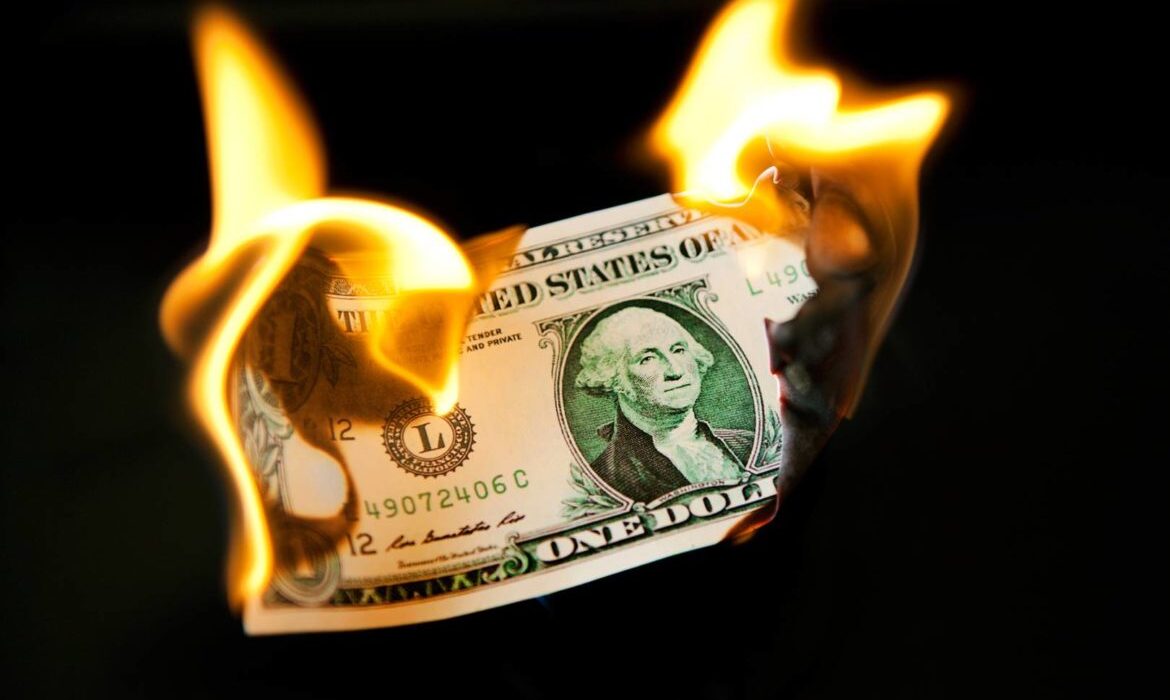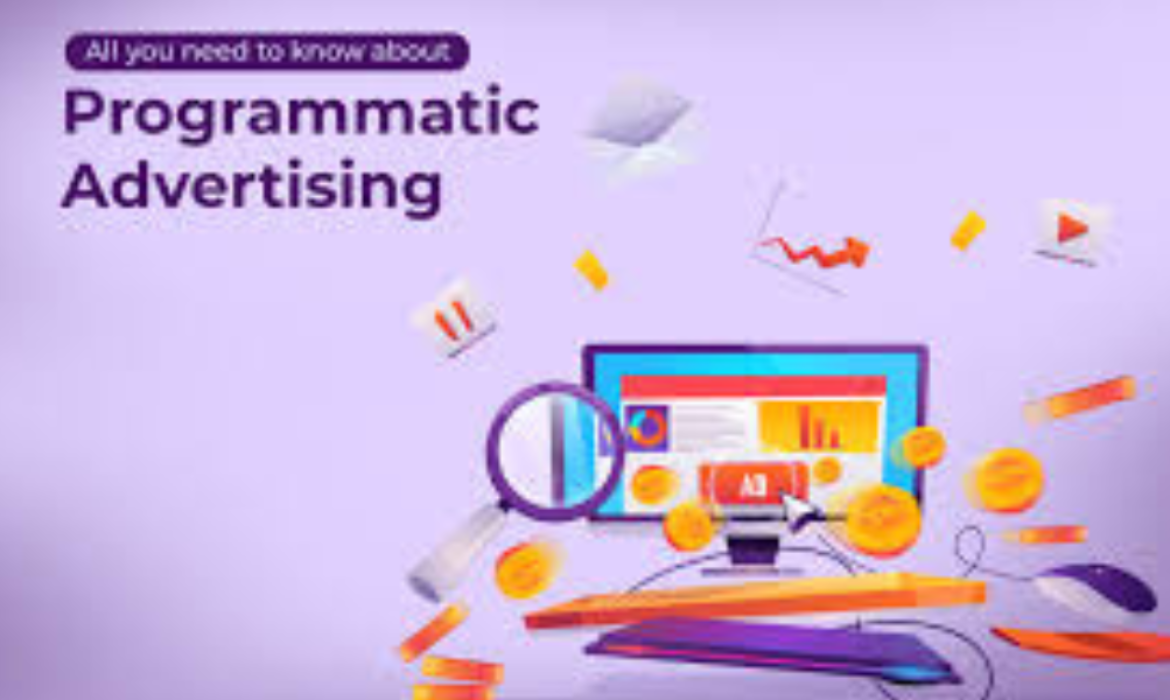Google Withhold Programmatic Data, Advertisers Pulls Back Ad Spend
Advertisers around the world are looking for more transparency and data into their programmatic buys from their ad tech vendors. However, one hold out is Google in the negotiation, a dominant player in the ad tech world.
Recently, a US-based retailer decided to not buy ads from the world’s largest online ad Digimarketplace Google Ad Exchange. They wanted granular log-level data about the bids won or lost by them over a festive period last year however Google refused. So, the advertiser spent dollars on the other programmatic platforms who were willing to share data and offer discounts.
As quoted by Digiday, the Head of Display at the U.S based retailer said,
“Google’s ad exchange didn’t make the list primarily because they’re not willing to give us any transparency or data around not only their take rates on our media sped but also anything we could already pull from our demand-side platform.”
Advertisers are unaware of how much money is Google making from the bids. Google shares aggregated information rather than impression-level data CPMs (Cost Per 1000 Impressions). Therefore, many advertisers are now looking for an alternative that gives them better CPMs and complete transparency over the data.
Some of the US-based advertisers are reducing, if not completely, stopping their spending on Google’s platform. Procter and Gamble’s marketers are one of them who are in the process of reducing the amount of money they spend on Google’s Ad Exchange, as explained by ad tech executives to DigiDay. He further expanded on the point, that it is unlikely that P&G will pull of the media dollars from Google’ s Ad Exchange. After all, Google holds power over auctions which means it can keep prices lower for advertisers and can perform better than other marketplaces.
For now, a handful of the larger programmatic advertisers are weighing their options on how much money to pull off from the Google marketplace. However, companies that have achieved better CPMs with other publishers have stopped buying ads completely from Google. On the other hand, some big programmatic spenders are pushing Google to share more granular data or else they will seek other ad exchanges.
“We’re seeing Google’s ad exchange become slightly less of the total pie,” said Jay Friedman, president at programmatic agency Goodway Group to DigiDay.
”I don’t have a percentage but it’s less but not significant.”, he further added.
However, it seems clear that Google would rather loose a few smart programmatic advertisers to protect the share of a multitude of other advertisers that buy Ads regardless of the price that they are paying.
Over the last decade, Google’s auction model has media buyers in a bind as on one hand, Google gave advertisers audience targeting specific data and a better chance of winning the Ads auction on its own platform rather than on the rival platform. Whereas, on the other hand, those benefits were only for those advertisers who used Google’s ad tech products to buy its inventory. Some advertisers stopped short over the setup but many believed that working on Google’s platform has more advantages and limited downsides.
The rival ad tech vendors, also known as Supply-side platforms soon turned the tide in their favor using header bidding to bid every impression. They started the first-price auction where the advertiser could bid exactly what he is willing to pay unlike in Google’s ad exchange where the price an advertiser pay is slightly higher than the bid they made.
Eventually, Google caved in and changed its policy in 2019 and introducing unified auction that would put Google in the level playing field with the rival platforms like Pubmatic and Rubicon Project that give advertisers access to granular data as per their need. Data from rival platforms is helping advertisers to chart the best course for a low-fee route to CPMs in this highly competitive market. In these auctions, there are chances of the same publisher inventory is made available through multiple ad tech vendors at the same time leading to advertisers paying more for inventory. To avoid this, advertisers are using the supply-path optimization technique to broker better programmatic deals, many of which are dependant on the data they receive from the vendors.
IAB GCC Report: Ramadan Budgets Shift Towards Performance based Ad Spends
Advertisers are changing their digital ad spend due to the ongoing coronavirus crisis affecting the businesses and the economy. The Dubai based Interactive Agency Bureau(IAB) that empowers GCC based media and marketing industries surveyed the marketing teams of nearly 30 Agencies and Clients between April 6 to April 12, 2020, for the impact of COVID-19 on Advertising.
Here are some main points from the report:
The findings suggest a huge downturn with 48% of respondents expect less than 30% of budget cuts in April and 41% of respondents see a decline in ad-spending or paused post-June.
With the Holy month of Ramadan expected to begin within weeks, there are still 34% of respondents who are yet to take decisions on Ramadan budgets while 51% are unsure about the directions of second-half budgets in this unprecedented period. This suggests that the majority of marketers are in ‘wait-and-see’ mode.
The report also states that 59% of respondents are suggesting that they will significantly increase the ‘Performance-based’ ad spend. This indicates marketers are in favour of Performance media in the second half.
Even though advertisers might be working on leaner budgets but are opportunistic to see 17% growth in Digital display in the second half. They also expect a rise in the audience and programmatic buying.
Lastly, 77% of respondents see COVID-19 will have a significant impact on the MENA advertising market than the 08/09 financial crisis.
Take a look at the pictorial images of findings and methodology from the report.

Image Credit:CampaignMe

Image Credit: CampaignMe

Image Credit: CampaignMe

Image Credit: CampaignMe

Image Credit: CampaignMe

Image Credit: CampaignMe

Image Credit: CampaignMe

Image Credit: CampaignMe

Image Credit: CampaignMe

Image Credit: CampaignMe

Image Credit: CampaignMe
There is a wave of optimism about the second half right now and are looking ahead of a post-pandemic world whenever it is possible. Definitely, there is a pendulum swing in the minds of advertisers whether to decrease ad spend or pause it entirely to what we hope for a clear picture very soon.
Google pledges $800 million to coronavirus relief, including Ad credits
Google announced in a blog post that it will be offering $340 million as free ad credits to small and medium businesses that have an account with them. It is committing more than $800 million which will be used towards a range of charities and to support initiatives to help those affected by the global pandemic.
Google CEO Sundar Pichai explained:
“As the coronavirus outbreak continues to worsen around the world, it’s taking a devastating toll on lives and communities. To help address some of these challenges, today we’re announcing a new $800+ million commitment to support small- and medium-sized businesses (SMBs), health organizations and governments, and health workers on the frontline of this global pandemic.”
Google’s commitment includes the following key areas:
- A $250 million in ad grants will be used to help the World Health Organization and other more than 100 government agencies globally to provide information about the pandemic.
- A $200 million investment fund will be set up that will support NGOs and financial institutions to provide small businesses with capital. This is in addition to the $15 million in cash grants Google.org provides to non-profits to help bridge gaps for SMB’s.
- A $340 million in Google Ad credits to small and midsize business owners with active Google ad account over the past year. Credit notifications will appear in their Google Ads accounts and can be used at any point until the end of 2020 across our advertising platforms”, as mentioned on the blog.
- $20 million in Google Cloud Credits for academic institutions and researchers as they leverage Google’s computing capabilities and infrastructure as they study potential therapies, vaccines and identify new ways to combat COVID-19.
- Financial support and expertise to help increase production capacity for lifesaving equipment which includes masks and ventilators.
In addition to this, Google has increased the gift matching support program for its employees who donate to charities. Pichai said that employees from across Alphabet including Google, Verily and X, are
“bringing engineering, supply chain, and healthcare expertise to facilitate increased production of ventilators, working with equipment manufacturers, distributors and the government in this effort.”
Earlier this month, Verily, Google’s sister company launched a coronavirus testing screening website with 1,000 Google volunteers to test people with symptoms. It’s a significant commitment from the tech giant and growing contributions towards a social cause.
Over the past few weeks, we have seen major contributions for COVID-19 from Silicon giants like Apple, Facebook, LinkedIn, Twitter, Salesforce has also funded to relieve the economic stress amidst the global pandemic.
YouTube Shorts: Will it be Able to Capture TikTok’s Audience?
- TikTok is incredibly popular for lip-syncing and dancing videos.
- TikTok had nearly 1.7 billion downloads as of February 2020.
- Many have tried to imitate Tik Tok’s features but none could reproduce the success.
- YouTube is reportedly soon launching a short video sharing feature ‘Shorts’ which aims to rival TikTok but not as a standalone product.
YouTube was always the cool kid on the block with little real competition since inception. There are plenty of other video platforms like Dailymotion, Vimeo, and Veoh that aren’t a threat to YouTube until TikTok came in. TikTok is a wildly popular app with over a billion downloads with Gen Z and recently witnessed a surge in its popularity during coronavirus quarantines especially with kids and young adults who are bored at home.

Image Credit: Sensor Tower
Can YouTube overtake TikTok Audience and Popularity?
YouTube, a Google-owned company has been the most widely used video-sharing platform in the world for 15 years with 2 billion monthly users. Even though 81% of 15-25 years old using YouTube, it doesn’t have the short-form content. Therefore, it is eager to capture the younger audience segment who are crazy about short-form videos around music that makes Tik Tok a hit. As a result, YouTube is reportedly working on a new feature ‘Shorts’ that it hopes will make a dent on the surging popularity of Tik Tok and keep more people on the platform.
The website The Information reported that YT is working on its own short video feature ‘Shorts’ similar to TikTok operation within the YouTube app. According to the site:
“Shorts will include a feed of brief videos posted by users inside the Google-owned app and will take advantage of the video service’s catalog of licensed music, songs from which will be available to use as soundtracks for the videos created by users.”
MSNBC’s Dylan Byers additionally confirmed on Twitter shortly after The Information’s report was live.
YouTube’s new features can have advantages over TikTok. For instance, it has extensive music licensing agreement in place which implies that there would be an array of music options to choose from short clips. It has a larger audience base, so influencers will find an advantage to stay over the platform as they would get access to reach more potential viewers. And lastly, YouTube has better monetization policies and systems in place which is a huge advantage for the influencers.
If the service is easily monetized by the content creators, the associated advertising revenue could fund high-quality content in a short video, which can attract more viewers- a win-win situation for all. On the contrary, TikTok doesn’t offer a way to monetize videos for content creators and ad offering is in pipeline.
Is YouTube Shorts different from other TikTok competitors?
Many established tech companies in Silicon Valley have tried to replicate the success of TikTok but in vain. Facebook tried Lasso in South America, a teen focused short video format app which has yet to gain traction. Instagram and Snapchat attempted to adopt some of TikTok’s features. Byte, launched by the founder of Vine witnessed some early success but is still young. However, none of the’ newly inspired TikTok apps’ have taken off the original.
YouTube has also previously replicated the feature that resembled Instagram stories in 2018 which was successful for creators increasing the subscriber base on average by 8% over those who didn’t use the feature.
The YouTube Shorts app release date is expected to be the end of the year. It would be interesting to see whether TikTok users migrate to YouTube Shorts and YouTube can capture some thunder from the rival. It will be exciting to see how things develop and as a result, TikTok develops a monetization system and comes up with ad offering.
COVID 19 Effect : How Could It Impact The Digital Ad Spend
The Great Recession was the lowest point in the history of advertising. The only time digital spend dropped in absolute terms was in 2009. However, according to the IAB survey of nearly 400 media buys and brands, 74 percent of buy-side decision-makers think coronavirus pandemic will have a larger impact on the digital ad spend than the 2008 financial crisis. The struggle against the ongoing coronavirus pandemic looks grim among the buy-side decision-makers.
Meanwhile, nearly a quarter of all respondents have paused all ad spend for the first and second quarters while another 46 percent have adjusted their media spend during the first half of the year as researched conducted by Interactive Advertising Bureau.
As quoted in Forbes, IAB President David Cohen said,
“This is what happens in times of crisis. Typically marketers will press pause for a moment, take a breath, assess the situation, replay and reevaluate.”
The COVID-19 crisis is going to have a material impact on the calendar year 2020. According to the report, the buy-side expects an increase in spending during May/June but no rebound for the final six months of the year.
The report suggests digital advertising to fair better than any other medium. Digital ad spends from March to June down by 33% compared to traditional media declined by 39%. Traditional out-of-the home advertising is highly affected by an estimated ad spend down by 51% for March and April and 41% for May and June. This makes sense considering people are home in self-isolation across countries, there would be fewer people to see billboards and digital displays.
With all the changes in the ad spend, 63 percent of advertisers are adjusting their messaging to focus on mission-based marketing and cause-related marketing. Meanwhile, tactical changes are also happening as a 38 percent plan to increase audience targeting and 35 percent plan to increase device marketing for OTT and CTV.
Media consumption is going to increase with this stay-at-home and work-from-home. The report also reflects that the crisis is going to hit the annual Upfronts in late April and May with Disney, Hulu, and Discovery pulling out as 73 percent of buyers said COVID-19 will impact their spending plans for 2020 and 2021. While 20 percent expect a decrease in their Upfront spends versus original plans.
Despite the bleak picture over the next few months, two-thirds of buyers are undecided for making any ad spend changes in Q3 and Q4 and 25 percent plan to make changes due to COVID-19. The IAB surveyed the marketers about the milestones they will be watching to calibrate their decisions. 65 percent said they will be watching the quarantine status while 49 percent are focused on the number of coronaviruses cases. Other milestones amongst the top five were business openings and closing (47%) and stock market (44%).
Speaking to Forbes, Sue Hogan, the IAB’s senior vice president of measurement expanded on the point,
“I would say that I think the optimism right now for the second half of 2020 is heartening,”
He further added,
“There’s definitely a pendulum swing in the minds of buyers to move from a pretty tight decrease in ad spend or pause entirely to what we hope will be close to planned by end of year.”
Brands Get Creative With Their Advertisements To Encourage Social Distancing
Who says Social Distancing can’t be creative? With creative advertisements, it surely can be!
- After Juan Delcan and Valentina Izaguirre’s Safety Match Art went viral, many iconic brands are getting creative with their advertisements to promote the importance of social distancing and creating advertisements to stay home during the coronavirus pandemic.
- As the situation around the world intensifies, the citizens of the world are called to understand and follow hygiene practices, self-isolation, and social distancing. Understandably, it is a challenging phase and including these behaviours in our day-to-day life isn’t easy. Unfortunately, there have been cases of defiance and indifference.
- Therefore, brands have stepped up to spread awareness on social distancing by altering the most essential element of their existence – Logos and slogans. While some consider it as a marketing gimmick and others as an incredible way to spread a vital message.
Whichever side you belong, take a look at brands like Audi, Fevicol, Nike and others spreading the message of “SOCIAL DISTANCING” on social media with their creative advertisements.
AUDI and VOLKSWAGEN
Held under the same ownership, Audi and Volkswagen tweaked their logos to promote social distancing messages on their social media accounts.
- AUDI
Audi took to Twitter to share a short video with a message “Stay at home, keep your distance, be healthy, support each other – we are in this together”. The post shows the interlocked rings of the luxury brand’s logo stretching out so it gets disconnected from each other to be four separate rings.
Keep your distance – stay together. Only together we make the difference. #AudiTogether pic.twitter.com/othOsjRRYA
— Audi (@AudiOfficial) March 26, 2020
- VOLKSWAGEN
Volkswagen also shared a similar video with a message “Thanks for keeping your social distance!” and separated the iconic V and W.
We are #Volkswagen. Thanks for keeping your social distance! #FlattenTheCurve pic.twitter.com/JeY27epjhl
— Volkswagen News (@volkswagen) March 23, 2020
MERCEDES BENZ
The automotive brand unveiled a logo on Instagram account designed by one of its employees Marcel Hobrath. The logo features an iconic three-pronged star implying to keep a safe distance from the outer circle.
https://www.instagram.com/p/B-XZizpC8DX/?utm_source=ig_embed
COCO-COLA
Coco-Cola is presently running its ad in New York’s Time Square which shows the usual interlocked letters are spaced out from each other with a slogan reading “Staying apart is the best way to stay united.”
Before experts jump to any conclusion that the brand is taking advantage of the situation, Coco-Cola through its Coco-Cola foundation has pledged to donate USD 13.5 million to five non-profit organizations in Canada and the United States for those involved in helping the affected to the pandemic.

Image Credit: The Coco-Cola Company
McDonald’s (BRAZIL)
One of the controversial logo changes from McDonald’s Brazil, which shows its iconic golden arches are pulled apart as posted on its Facebook page. Designed by ad agency DPZ&T, it explained that the distance between the customers and the company is temporary so that we can stay always together. McDonald’s is providing food through delivery and drive-thru.
It faced a backlash from consumers including Bernie Sanders, who tweeted about the company’s sick leave policy for its employees.

Image Credit: McDonald’s Facebook Page
IKEA
In Israel, advertising agency McCann designed IKEA assembly manual with a caption “Stay Home” showing a picture of the house with a key, lock and toilet paper.

Image Credit: Dezeen
CHIQUITA
The international provider of bananas and other fruits produce tweaked its logo on Instagram. It posted the logo without the iconic mascot and captioned the post saying she was “already home” and asked the followers “to do the same and protect yourself.” The social accounts of the brand are operated by Portugal-based digital agency Alice from the Young Network group. This post received positive feedback including heart emojis and claps.
https://www.instagram.com/p/B-E7kQjIj1D/?utm_source=ig_embed
ADIDAS
Sportswear manufacturer started a series #hometeam virtually to encourage everyone to be creative and fit while staying indoors.

Image credit: Money Control
MUCINEX
Mucinex created a series of informational ads promoting facts about COVID-19 to combat misinformation. The campaign promotes hand sanitization, maintain at least 6 feet distance, refrain from touching faces and debunks many myths. Each campaign directs people to visit website COVID-19facts.com run by the World Health Organization, John Hopkins and international experts.
Created by McCann New York and McCann Health New York in association with award-winning art illustrator Noma Bar, Mucinex’s campaign will run across all mediums to help calm people and provide the right information.

Image Credit: Money Control
NIKE
Nike didn’t tweak its logo but launched a social media campaign with a global roster of star athletes which includes NBA player LeBron James and golfer Tiger Woods. The campaign shows how these sports stars are practicing social distancing by “playing inside.”
Nike had to closed several of its global stores due to the pandemic. Many sports events like NBA and Olympics have been postponed or canceled. Earlier a logo was redesigned by Slovenia based creative director Jure Tovaljan with a catchphrase modified to “Just Don’t Do It” but the company opted to stick to its identity.
https://www.instagram.com/p/B-AguSsAL0o/?utm_source=ig_embed
MERCADO LIBRE
Argentina Ecommerce platform tweaked its logo from changing handshakes to elbow bumps.

Image Credit: India Television
FEVICOL
The world’s strongest adhesive product owned by Indian company Pidilite Industries tweaked its logo which showed two elephants pulling away from each other with a tagline in Hindi that means “For future bonding, maintain some distance today.”
https://www.instagram.com/p/B91G66rlS3q/?utm_source=ig_embed
Surely, this unique initiative of creative advertisements by brands can help to bring awareness to social distancing and encourage more people to adopt the practice.
AdLedger, Madhive Releases Study on Ad Tech Industry, Only 6% Satisfied with Current Digital Ecosystem
A survey by Industry Index suggests that just 6% of the industry is satisfied with the current digital advertising ecosystem. The survey was released by Adledger, non-profit research and development consortium developing the global technology solutions for the digital media in partnership with Madhive, a TV advertising solutions company.
More than 100 brands, advertisers and publishers were surveyed to understand the current and future state of adtech with only 6% are satisfied with the present ecosystem of digital advertising. Another 92% of respondents believe there is a need for an industry-wide revolution. Christiana Cacciapuoti, executive director at AdLedger said,
“Digital advertising is still suffering from the same issues of transparency, fraud and fragmentation. And it’s because we just keep slapping band-aids on a fundamentally broken system, when we need to be developing a new infrastructure that’s driven by innovative technologies.”
The figures come into light as the Australian Competition and Consumer Commission (ACCC) commences its inquiry into the adtech industry which it has described as ‘opaque’ and also calling for feedback from the industry.
“The AdTech ecosystem absolutely needs to be changed,” said Alysia Borsa, EVP/Chief Business & Data Officer at Meredith Corporation. She further added,
“There is a lack of transparency which leads to fraud, which leads to low quality, which leads to poor performance. It’s a really bad cycle.”
The other findings of the survey include, 83% of respondents believe cryptography can be used to create transparencies and efficiencies, most often agreeing that cryptography could improve problems associated with fraud (66%) and the ability to track results (66%). And 72% believe we will see significant integrations in the next five years.
Adam Helfgott, CEO at MadHive said,
“Sooner or later, the industry is going to realize that this dysfunctional relationship has got to end, and the only way to fix it is with next-generation technologies,”
“And with blockchain and cryptography already weeding out fraud and solving similar issues on OTT, it’s only a matter of time till the industry stands together and overhauls the system.”
MadHive, TEGNA and IBM originally founded AdLedger to unite the advertising industry towards developing next-generation technology standards that solve the current issues in the ecosystem.
Google rolls back Chrome’s cookie security measure due to COVID-19
Google is temporarily rolling back a recent privacy feature ‘SamSite Cookie’ it launched with Chrome 80, to ensure stability to websites amidst the coronavirus pandemic.
Justin Schuh, Director of Chrome Engineering said in the blog,
“In light of the extraordinary global circumstances due to COVID-19, we are temporarily rolling back the enforcement of SameSite cookie labeling, starting today.”
The SameSite policy was the change in how Chrome treated cookies. Before this policy, Chrome allowed more cookies including third-party by default. SameSite, however, has turned that default. With the release of Chrome 80 in February, Chrome began to enforce secure-by default handling of third-party cookies to improve privacy and limit tracking.
Google was planning to roll out this change slowly for all the users during the rest of the year and closely monitor the impact on the web. The SameSite cookies primary role would be to prevent third party domains from using browser cookie files to track users as they browsed on different sites across the internet. At a higher level, it meant a website owner should set a third-party cookie as being okay or else Chrome would block it.
Online advertisers and web analytics firms were most impacted by the changes that migrated to other tracking practices after the announcement of Google’s SameSite cookies. However, many government sites, banking, intranets, and others are using third-party cookies in other contexts.
The disabling of third-party cookies can cause some sites to break – even if SameSite cookies roughly shipped to 1% of the Chrome users. Therefore, temporary rollback will ensure that these small numbers of users are not much impacted. Many major sites were prepared for this change but Google said it wants
“to ensure stability for websites providing essential services including banking, online groceries, government services, and healthcare that facilitate our daily life during this time.”
Schuh further added that as they roll back enforcement, organizations, users or sites should see no disruption. As social distancing measures have been followed worldwide, reliance on online services has increased and any kind of disruptions can cause big issues especially if it is concerned with healthcare resources.
Google also said that they plan to resume the enforcement in the future and will give advance notice on their blog. This isn’t the only announcement that is affected by the outbreak. Google has also paused temporarily adding new features to Chrome and Chrome OS and focus on security and stability owing to adjustments in their work schedules.
Tech Giants Set To Lose billions in Ad revenue because of Coronavirus
The coronavirus has spread to 175 countries around the world, and it shows no sign of a slowdown. The virus has effectively shut down all major events around the world and has a major impact on the ad tech industry. Ad spending is falling off the cliff thanks to the disruption caused by the pandemic – major tech giants like Twitter, Google, Facebook, and others are expected to face the brunt of the slump in terms of losing billions of dollars in ad revenue this year.
Why we care
The losses aren’t going to weaken the companies but will put a dent in the extraordinary growth which everyone has experienced over the years.
Numbers speak louder
Cowen & Co. analysts estimate that the two internet giants together could see more than $44 billion worldwide ad revenue evaporate this year. They predict the following losses:
- Facebook: Drop of $15.7 billion, 19% down from the previous estimate.
- Google: Down by $28.6 billion, an 18% decline from the previous estimate.
- Twitter: Down by $701 million, 17.9% below estimate
- Snapchat: Drop by $977 million, 31.8% down from the previous estimate.
Global advertising revenue grows in the ballpark of the GDP rate. Therefore, the global economic slowdown directly affects the global advertising market.
The tech giants were forthcoming with the investors on the expected losses and here what they have to say.
- Facebook execs said in their blog post that the company has “seen a weakening in our ads business in countries taking aggressive actions to reduce the spread of COVID-19.
- Twitter announced in the press release that the company is “withdrawing its revenue and operating income guidance for the first quarter of 2020, due to the growing impact of COVID-19 on the global operating and economic environment and their effect on advertiser demand.”
That said, Both Google and Facebook will continue to make profits even with double-digit revenue drops. Analysts think the largest tech companies could emerge stronger from the coronavirus crisis than ever because of their healthy balance sheets.
U.S. Ad Revenue Growth Forecasts, FY2020
| All media | Forecast pre-epidemic | Forecast March 2020 |
| Excluding cyclical events
(Olympics, elections) |
4.4% | -4.4% |
| Including cyclical events | 6.6 | -2.8 |
| DIGITAL | ||
| Excluding cyclical events | 10.9% | 3.5% |
| Including cyclical events | 11.4 | 3.9 |
| Digital search | 11.6 | 4.5 |
| Digital social | 17.2 | 8.7 |
| Digital video | 14.2 | 8.3 |
| LINEAR MEDIA | ||
| Excluding cyclical events | -4.4% | -15.0% |
| Including cyclical events | 0.0 | -11.7 |
| National TV – excl. CE | -2.7 | -13.0 |
| National TV – incl. CE | -0.4 | -12.7 |
| Local TV – excl. CE | -4.5 | -14.4 |
| Local TV – incl. CE | 12.8 | 0.9 |
| Radio | -2.3 | -14.1 |
| -17.0 | -25.4 | |
| Out of home | 3.7 | -11.8 |
Image Credit: Axios Visuals
What is driving the news
All the advertising-based businesses are facing the COVID-19 risk but those who are dependent on the self-service advertising revenue from small businesses, which are now shut down will be highly affected in the short term.
As quoted in AXIOS, Vincent Letang, executive vice president and director of global forecasting for Magna Global, the media buying unit of global ad agency IPG said,
“In the first half of the year, digital media vendors will feel the heat. But I still think they will recover more strongly than traditional media in the second half.”
The tech platforms make their revenue by advertising on social media and search which will take a hit in the short term for two reasons:
1. They are self-serve which means anyone can buy ads through the automated platforms at any time without any contract. Therefore, unlike TV ad contracts, there are no policies in place and brands have to adhere to when pulling the plug.
2. Mostly the ads are purchased by small businesses. Letang expressed his views to Axios,
“Hundreds of thousands of small businesses who probably count for 70% of social and search, they will stop advertising for weeks as they are closed. For some of them, it will be hard to come back, as many won’t have the liquidity to start marketing.”
What’s the future
Analysts expect overall ad revenue to go down by 4.4% excluding cyclical events due to the coronavirus impact on the economy.
Growth in the digital ad market is dominated by big tech companies like Google, Facebook, Twitter, and Snapchat will emerge from the crisis strongly in 2021.
Magna predicts linear ad sales to decrease to 6 percent and digital media to grow 8 percent.
Programmatic Advertising Platforms in 2020: A Complete Guide
Adtech space is complex and many marketers are still unsure about programmatic advertising and its ecosystem. However, it is essential to understand, even in brief, basics of programmatic advertising and how it works. Eventually, it is the future of advertising.
As reported by Statista, programmatic ad spending worldwide was $106 billion in 2019. It is estimated to reach $127 billion in 2020 and further grow by $20 billion in 2021.
What is Programmatic Advertising?
It is also known as programmatic marketing or programmatic media. It can be described as automatic buying and optimizing digital campaigns through real-time auctions, where ads are bought at the same time when a visitor loads the website instead of buying directly from the publishers.
It allows you to target your audience. The artificial intelligence (AI) powered algorithms classifies users based on their demographic data, behavior, geographics, psychography, and other criteria to determine which ad to be shown to each user.
How does it work?
There are different components of the programmatic advertising ecosystem- Demand-side platform (DSP), Supply-side platform (SSP), data management platform(DMP), ad exchange, ad servers, and ad network.
The advertiser uses DSP to buy ad placements and DMP to utilize third-party data. Publishers use SSP to connect their inventory to the ad exchange and programmatic bids can be placed using AI. The auction takes place when the web is getting loaded and the highest bidding ad will appear when the web page is completely loaded. This includes ad slots for display, voice, mobile, video and others,

Image Credit: Medium
Now, we are clear on the concept of programmatic advertising, let’s look at the top 8 programmatic platforms of 2020 to help you make an informed choice about the best platform for your advertising.
Top Programmatic Platforms:
1.MediaMath:

MediaMath is a leading omnipresent programmatic marketing platform that offers end-to-end campaign management to the advertisers.
It is trusted by two-thirds of Fortune 500 companies and is partnered with many developers and agencies to improve business. MediaMath DMP helps marketers with the data sets from the first and third sources. In programmatic advertising, you are unable to view the placement of the ad until is it published. MediaMath assures brand safety and will refund money to the advertiser if the ad run next to offensive content.
The omnichannel DSP includes mobile, native, video, audio and Digital-out-of-home (DOOH) ads. Brain Insights and Brain OPtimization utilize predictive modeling to optimize the ad campaign.
2. TubeMogul

TubeMogul is a part of Adobe Advertising Cloud.
TubeMogul programmatic advertising software facilitates brands and agencies to plan, buy, measure and optimize their global advertising.
It specializes in video advertising and has developed the most comprehensive client training and award-winning customer service. They have helped clients to set up most sophisticated programmatic ads across the digital screen, television or digital out-of-home (DOOH) channels from a single platform. They also enable brands with access to premium ad inventory through a real-time bidding process.
In February 2016, it had launched the Non-Human Traffic Credit Program where advertisers will be compensated if traffic identified as non-humans by White Ops.
3.Smarty Ads:
 Smarty ads provide a full-stack advertising platform that caters to brands, agencies, publishers and app developers. It offers the world’s best solutions for advertising and monetization. This ecosystem includes the demand-side platform (DSP), supply-side platform (SSP), Data management platform (DMP) and ad exchange. It also offers a White label solution that allows a fully customizable advertising platform to launch your own business.
Smarty ads provide a full-stack advertising platform that caters to brands, agencies, publishers and app developers. It offers the world’s best solutions for advertising and monetization. This ecosystem includes the demand-side platform (DSP), supply-side platform (SSP), Data management platform (DMP) and ad exchange. It also offers a White label solution that allows a fully customizable advertising platform to launch your own business.
It also provides ad toolbox, analytics, blockchain ad stack, a customer data platform and rich targeting capabilities which helps advertisers with ad inventory, data visualization, transparency, and consolidated customer data to manage the campaign effectively. The platform also enables advertisers to run display, video, native, or in-app ads on desktop and mobile devices.
Smarty Ads’ header bidding technology allows publishers to offer inventory to all demand partners at the same time. Publishers can run a pre-bid auction to sell inventory at a premium price and generate a higher yield. Smarty Ads In-app header bidding provides advanced bidding to the mobile ecosystem. It is beneficial to app developers to uncover the real value of their digital inventory.
4.Pubmatic:
 Pubmatic is a programmatic digital advertising technology and solution provider to publishers, advertisers, app developers, and video publishers.
Pubmatic is a programmatic digital advertising technology and solution provider to publishers, advertisers, app developers, and video publishers.
Advertisers have access to inventory powered by real-time insights through Pubmatic’’s private marketplace. eMarketer reports that PMP’s are expected to comprise the majority of programmatic spending by 2021. Pubmatic Openwrap makes it easier for buying and selling inventory cross channels allowing digital advertising, in particular, video advertising to achieve full potential.
Pubmatic has launched a fraud-free program to maintain transparency and will provide credit if any fraud is suspected. Using Real-Time Bidding (RTB) technologies, publishers can drive the highest yield for each impression. Pubmatic safeguards publishers’ audiences across ad formats and screens leveraging manual and automated processes.
5. Simpli.fi

Simpli.fi is a leading localized programmatic advertising platform that enables the purchase of highly-targeted impressions on the real-time bidding process.
It has a network of largest buyers of local advertising including local media groups, multi-location brands, and trade desks. Simpli.fi aids companies to localize ad targeting, maximize the performance of local campaigns and optimize audiences.
Simpli.fi’s geo-fence technology is the most advanced location-based mobile advertising technology based on specific geographic shapes. Simpli.fi’s performance is unmatched through unstructured data and programmatic infrastructure. Advertisers can enhance audience targeting using CRM data and can optimize further in real-time using search and contextual keywords, IP data, dayparting, frequency capping and more.
It has developed an ecosystem of DSP, SSP, and DMP among other technologies.
6. Adroll:

Adroll growth marketing platform helps a brand to find audiences, personalize, cross channel experiences that make customers come back and measure your impact on the customer journey.
It combines first-party data with third-party data to give detailed shoppers insight which will help advertisers to identify and attract the audience that loves their brand.
7. Choozle:
 Choozle is a self-service digital advertising software platform built for marketers, publishers and agencies. It uses customer data to power programmatic advertising across mobile, video and display and other mediums from a single interface.
Choozle is a self-service digital advertising software platform built for marketers, publishers and agencies. It uses customer data to power programmatic advertising across mobile, video and display and other mediums from a single interface.
The self-serve tools allow advertisers to create hyper-targeted campaigns using first and third-party data. There is no minimum ad spent limit for any type of business. Choozle provides campaign set up, ad budget allocation, execution, and reporting.
8. Rubicon Project:
![]()
Rubicon Project created a new advertising model where it is automating the buying and selling of advertising. The automated advertising platform is used by leading publishers across the globe to transact with top brands enabling them to reach more than1 billion consumers.
How to choose the right programmatic ad platform?
There are many other DSPs’ except the above like Facebook ads, Adready, Centro, DoubleClick, Pulse point, AppNexus and many more. Given the vast options, how to select tools that are beneficial to your brand? There are few criteria to keep in mind while evaluating a programmatic ad platform.
1.Cost:
Pricing is a major deciding factor while considering a programmatic platform. There needs to be clarity on the minimum fee, upfront fee, training fee and the actual cost of media. Can the pricing be negotiated? Understand the cost structure and various fee structures.
2.Transparency:
It is an essential factor to consider as ad frauds are quite common. Therefore, ask about the safety measures implemented by the provider and show the inventory sources, placements and costs.
3.Technology:
Choose a programmatic advertising platform that provides technology and solutions suitable and customized for your campaign goals. The proprietary technology for every programmatic tool makes them different from others.
4.Ad targeting
Compare targeting options from each vendor before final selection. Does it provide private marketplaces? Does it use first party and third party data for brand safety? Does it have an advanced ad- target options and personalization capabilities?
5.Technical support:
What kind of technical support do they offer and how efficient it is?
Selecting the right platform is crucial, but it is not enough to execute a successful campaign. A planned programmatic strategy and implementation will help in accurate audience targeting and ultimately would yield desired results. Some of the popular brands have already achieved good results from the programmatic advertisement. Here are some popular programmatic advertising case studies which explain more about how this would be beneficial to your business.
Closing Words
The benefits of programmatic advertising are immense and certainly is the future of digital advertising. However, the big debate is about privacy wars that are presently going on. Brian O’Kelley, CEO of AppNexus said,
“48% of all digital advertising dollars accrue to just two companies – Facebook and Google”.
A response to this dominance is the technological consortiums like LiveRamp, App Nexus, Rocket fuel, MediaMath, and many others. With data privacy being a big concern for tech companies, these programmatic platforms are being less intrusive and invasive and moving towards people-based marketing.
If you are in the decision-making process to select any of the tools, do thorough research before diving in. Programmatic advertising is exciting and shows no signs of slowing down.

